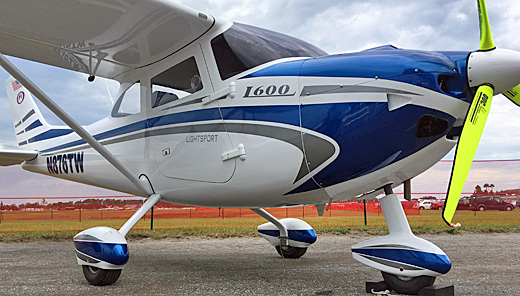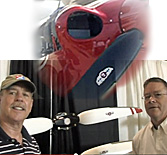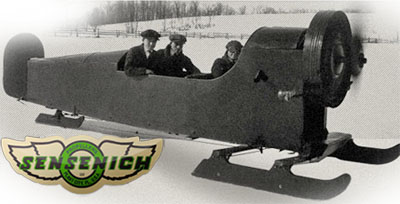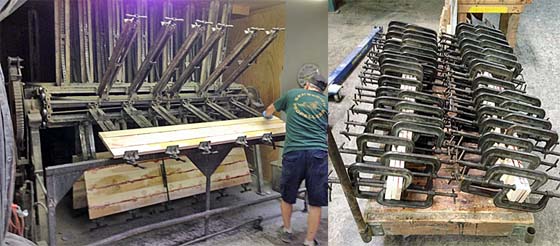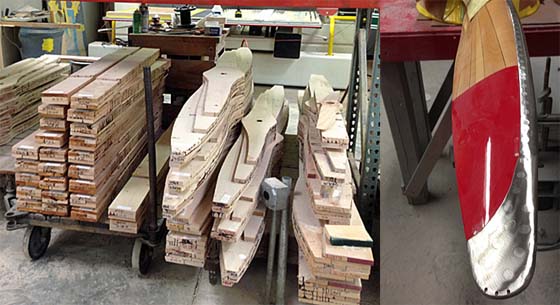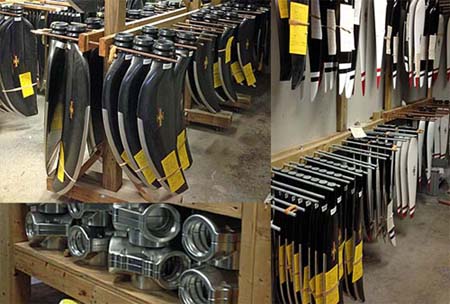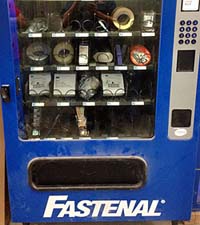
Can you hear it? Do you notice pilots all around you preparing for the annual pilgrimage to Oshkosh, Wisconsin for AirVenture 2023? Preflights happening. Engines firing up. Courses set on the EFIS. We’re off to the biggest aviation week of the year! One pre-show announcement came from one of our most stable and long-lived producers in recreational aviation, Sensenich Propellers. Based in Plant City, Florida not far from Lakeland where Sun ‘n Fun happens every year, Sensenich will be going on the road with the rest of us as we make our way to upper midwest U.S. Come on along. Hope to see you on the grounds… though maybe not because on the busy days literally hundreds of thousands of pilots and friends will be examining tens of thousands of aircraft and every imaginable kind of aviation gear, including props, of course. Now for Lycoming’s O-320 On July 11, 2023 Sensenich received a Supplemental Type Certificate (STC) for its carbon ground adjustable pitch STOL propeller on Piper Super Cub Aircraft with O-320 engines.


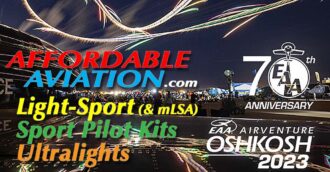 One pre-show announcement came from one of our most stable and long-lived producers in recreational aviation,
One pre-show announcement came from one of our most stable and long-lived producers in recreational aviation, 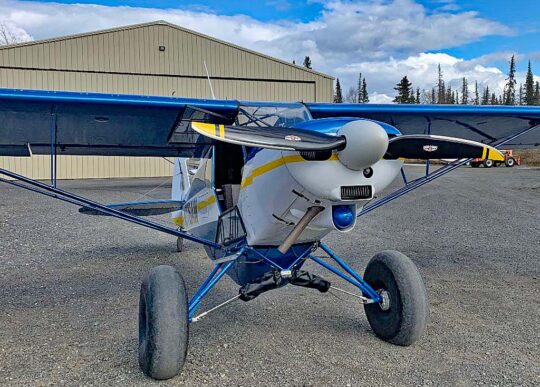 The STC is currently available and shipment of pre-order propellers has begun.
Extensive testing was performed during the certification project in both Alaska and Texas. The results were good.
Reduced weight, increased responsiveness, and increased operational flexibility are clear benefits of this high-performance propeller. In addition, this propeller’s innovative pitch adjustment feature and stainless steel protection give the customer maximum performance in multiple harsh and dynamic operating conditions. Pilots on supercub.org have been raving about the propeller's performance on their aircraft.
The STC is currently available and shipment of pre-order propellers has begun.
Extensive testing was performed during the certification project in both Alaska and Texas. The results were good.
Reduced weight, increased responsiveness, and increased operational flexibility are clear benefits of this high-performance propeller. In addition, this propeller’s innovative pitch adjustment feature and stainless steel protection give the customer maximum performance in multiple harsh and dynamic operating conditions. Pilots on supercub.org have been raving about the propeller's performance on their aircraft.
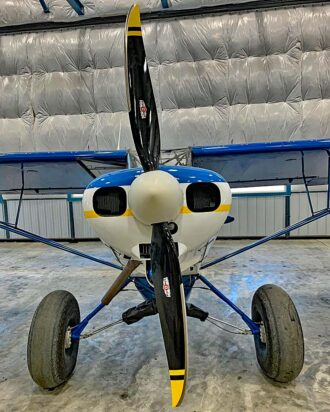 Sensenich seems determined to be on the nose of every airplane they can identify — and on the aft of dozens more. The company offers props for all manner of aircraft plus does a large business with airboats that are used all over Florida.
The southern company said they have other projects in the works for FAA approval on carbon ground-adjustable propeller STCs for Lycoming O-320 powered Cessna 172 aircraft along with type certification for 65 to 140 horsepower Continental and Lycoming four-cylinder engines. These propellers will offer the same performance and weight reduction benefits to those aircraft and engines.
Sensenich seems determined to be on the nose of every airplane they can identify — and on the aft of dozens more. The company offers props for all manner of aircraft plus does a large business with airboats that are used all over Florida.
The southern company said they have other projects in the works for FAA approval on carbon ground-adjustable propeller STCs for Lycoming O-320 powered Cessna 172 aircraft along with type certification for 65 to 140 horsepower Continental and Lycoming four-cylinder engines. These propellers will offer the same performance and weight reduction benefits to those aircraft and engines.
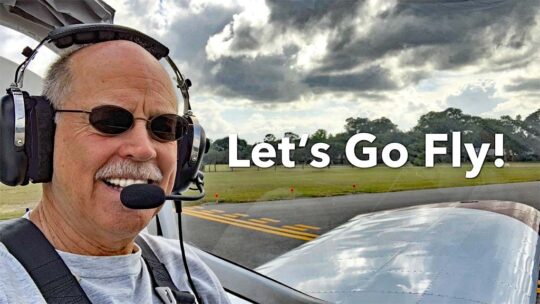 However, I have gotten to fly a small number of airplanes for a higher number of hours. The most recent such experience is with a
However, I have gotten to fly a small number of airplanes for a higher number of hours. The most recent such experience is with a 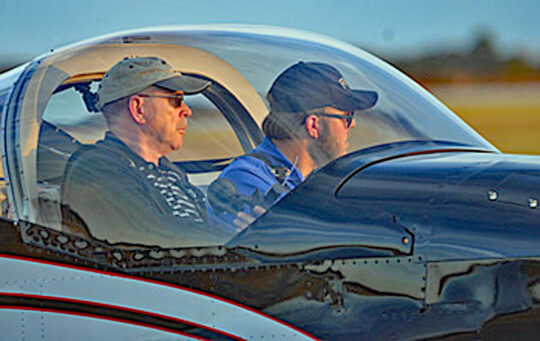 I will let the two videos below provide most of the nuts and bolts details that pilots crave. In the following words, I'll relate some of my experiences and discoveries after flying the -12 for more hours.
To begin, I'm a high wing guy. Most pilots have a clear preference for high or low wing configurations. Some think low wings look "less awkward" and "more streamlined."
They are entitled to that opinion, but for me, the number one reason to fly an aircraft with an engine is visibility… to observe a beautiful landscape unfold below. I've found aerial sightseeing is a common desire among aviators. If so, a low wing gets in the way. RV-12 places the wing sufficiently aft that from either seat you actually do have some downward visibility, but it is not as broad as a high wing design, especially one with cantilevered construction; no wing strut gets in your way.
I will let the two videos below provide most of the nuts and bolts details that pilots crave. In the following words, I'll relate some of my experiences and discoveries after flying the -12 for more hours.
To begin, I'm a high wing guy. Most pilots have a clear preference for high or low wing configurations. Some think low wings look "less awkward" and "more streamlined."
They are entitled to that opinion, but for me, the number one reason to fly an aircraft with an engine is visibility… to observe a beautiful landscape unfold below. I've found aerial sightseeing is a common desire among aviators. If so, a low wing gets in the way. RV-12 places the wing sufficiently aft that from either seat you actually do have some downward visibility, but it is not as broad as a high wing design, especially one with cantilevered construction; no wing strut gets in your way.
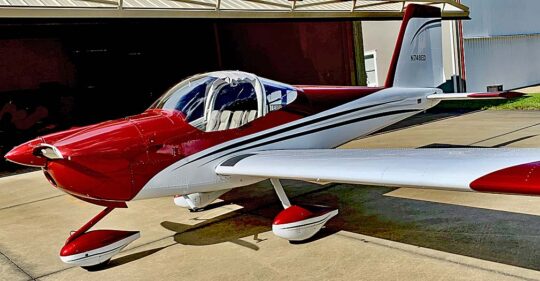 High wing airplanes are usually much easier to enter, a factor for older, less flexible pilots. Yet among low wing designs, RV-12 is easier as you enter from the front of the wing (see step in a nearby photo). You can use structure to help climb up on the wing and once you get to that point you can simply step onto the floor. You don't have to step in the seat as on some low wing aircraft. Most folks don't like having to do that and some low wing owners have a towel to put on the seat to keep dirty shoes off of it.
High wing airplanes are usually much easier to enter, a factor for older, less flexible pilots. Yet among low wing designs, RV-12 is easier as you enter from the front of the wing (see step in a nearby photo). You can use structure to help climb up on the wing and once you get to that point you can simply step onto the floor. You don't have to step in the seat as on some low wing aircraft. Most folks don't like having to do that and some low wing owners have a towel to put on the seat to keep dirty shoes off of it.
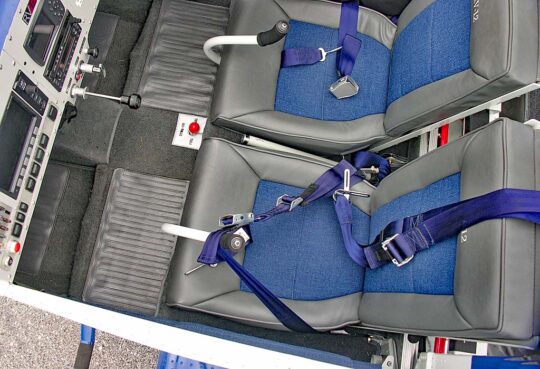
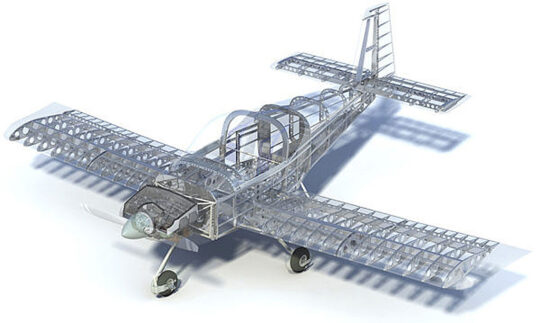
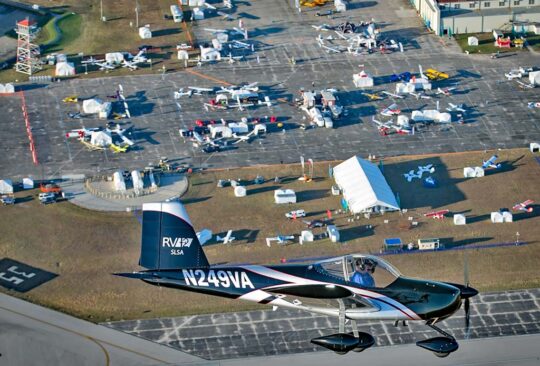
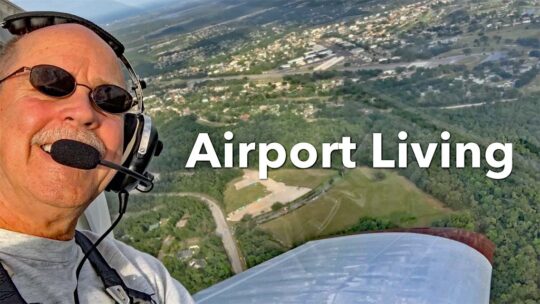 That's enough about me and what I think of RV-12. Check out these two videos and learn more about Van's terrific RV-12. Happy flying!
Tail winds, everyone!
The nearby photo shows me on downwind for runway 6 at
That's enough about me and what I think of RV-12. Check out these two videos and learn more about Van's terrific RV-12. Happy flying!
Tail winds, everyone!
The nearby photo shows me on downwind for runway 6 at  In-flight review — from Sebring 2014…
https://youtu.be/Z1Mi_DgqgVM
Post-flight review — more details…
https://youtu.be/Q5TWZk-YRGo
In-flight review — from Sebring 2014…
https://youtu.be/Z1Mi_DgqgVM
Post-flight review — more details…
https://youtu.be/Q5TWZk-YRGo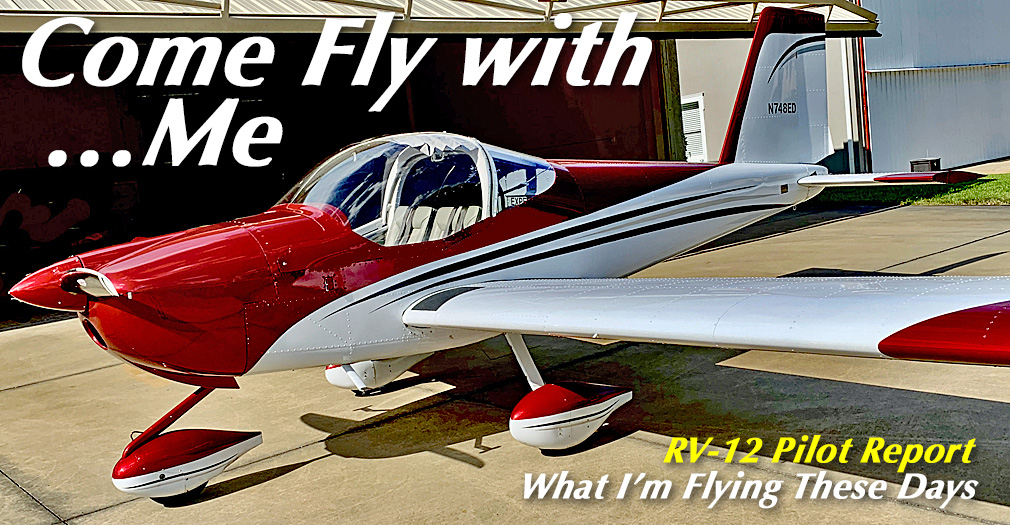
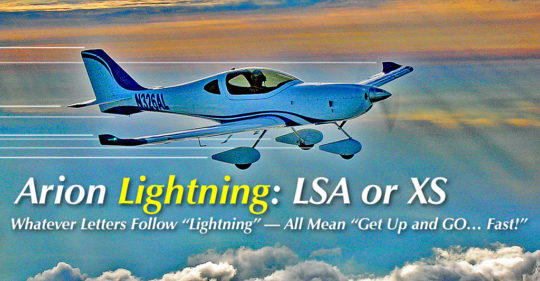 While most light aircraft producers concentrate on either kits or fully-built, a few swing both ways. Some builders unwilling to experiment with two very distinct business models permitted others to contract build a fully-built version while they focus entirely on kit building. Few have managed to do well with both endeavors but Arion seems to have solved the challenges.
Arguably the shapeliest and smoothest aircraft in either the kit or RTF space is Arion Aircraft's Lightning series. Nearly everyone agrees these qualify as fast-when-sitting-still types. Even one of the many electric airplane wannabe producers,
While most light aircraft producers concentrate on either kits or fully-built, a few swing both ways. Some builders unwilling to experiment with two very distinct business models permitted others to contract build a fully-built version while they focus entirely on kit building. Few have managed to do well with both endeavors but Arion seems to have solved the challenges.
Arguably the shapeliest and smoothest aircraft in either the kit or RTF space is Arion Aircraft's Lightning series. Nearly everyone agrees these qualify as fast-when-sitting-still types. Even one of the many electric airplane wannabe producers, 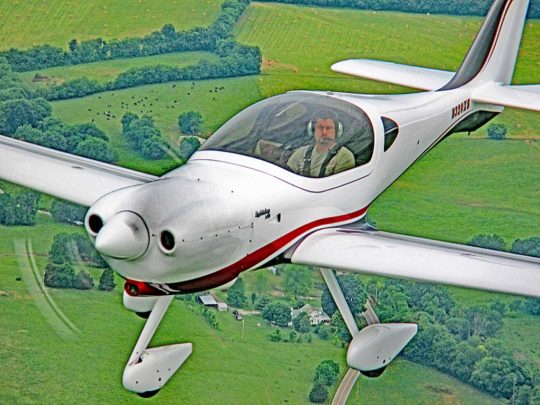 Yet aviation’s leading draw may be going fast as more is always better, right?
Indeed, one reason Arion makes a kit as well as their LS-1 Light-Sport model is because then they can access the excellent speed potential of this slick design.
Let the drooling begin over these beautifully-contoured flying machines that can race 135 to 190 miles an hour for a fairly modest investment.
Arion's LS-1 is a complying Light-Sport Aircraft that meets all the parameters and succeeded in passing a detailed FAA audit with flying colors a few years back.
Lightning XS is the Experimental model on which you can install a more powerful engine.
That these handsome aircraft are also 100% designed and manufactured in the USA may be sweet icing on the cake for many readers.
Yet aviation’s leading draw may be going fast as more is always better, right?
Indeed, one reason Arion makes a kit as well as their LS-1 Light-Sport model is because then they can access the excellent speed potential of this slick design.
Let the drooling begin over these beautifully-contoured flying machines that can race 135 to 190 miles an hour for a fairly modest investment.
Arion's LS-1 is a complying Light-Sport Aircraft that meets all the parameters and succeeded in passing a detailed FAA audit with flying colors a few years back.
Lightning XS is the Experimental model on which you can install a more powerful engine.
That these handsome aircraft are also 100% designed and manufactured in the USA may be sweet icing on the cake for many readers.
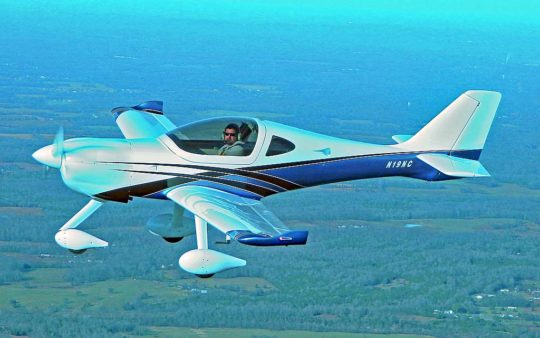 “Lightning LS-1 is designed and built around Jabiru’s powerful 3300 six-cylinder aircraft engine,” noted Arion. “With a displacement of over 200 cubic inches and a direct drive crank, this compact beauty outputs 120 horsepower to deliver performance rarely matched in a Light-Sport Aircraft.” Lightning has no trouble hitting the LSA speed limit of 120 knots (138 mph).
“[However, we] spent more than three years making the kit Lightning as efficient and fast as we could, so slowing down to 120 knots was a complete reversal of our thinking but one that had its benefits,” said principal and designer, Nick Otterback. “By changing the airfoil slightly and adding three feet of wing span, LS-1 stalls below 44 knots clean, giving our aircraft an impressive 52-knot approach speed.”
“Lightning LS-1 is designed and built around Jabiru’s powerful 3300 six-cylinder aircraft engine,” noted Arion. “With a displacement of over 200 cubic inches and a direct drive crank, this compact beauty outputs 120 horsepower to deliver performance rarely matched in a Light-Sport Aircraft.” Lightning has no trouble hitting the LSA speed limit of 120 knots (138 mph).
“[However, we] spent more than three years making the kit Lightning as efficient and fast as we could, so slowing down to 120 knots was a complete reversal of our thinking but one that had its benefits,” said principal and designer, Nick Otterback. “By changing the airfoil slightly and adding three feet of wing span, LS-1 stalls below 44 knots clean, giving our aircraft an impressive 52-knot approach speed.”
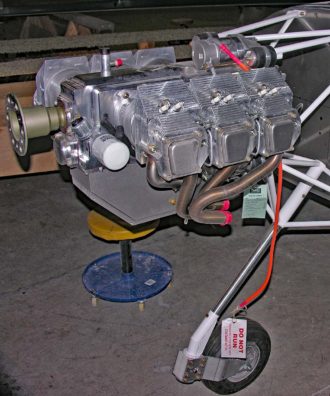 A Jabiru 3300 delivers solo climb in excess of 1,200 fpm and owners can expect 1,000 fpm at its 1,320 pounds gross weight. At cruise speeds of 120 knots, the Jabiru burns a miserly 5.5 gallons an hour. “These are real performance numbers a pilot can rely on; not on a perfect day at sea level or flying around solo, but all loaded up,” stated Nick.
Most companies list useful load, but Arion said the more meaningful payload can be up to 470 pounds. That will allow two big Americans plus some luggage, assuming weight and balance concurs. “Now standard equipped with 40 gallons of fuel, a Lightning pilot can go over 800 nautical miles with VFR reserves,” Nick added.
Lightning XS is sold in kit form. The taller XS with more ground clearance offers a redesigned forward fuselage structure that gives the builder the option to choose engines up to 180 horsepower.
Landing gear offering higher ground clearance permits bigger props on this new kit to allow the speedier model to hit speeds of 160 knots (184 mph) or more. Firewall aft, XS is much the same as the classic Lightning including its 42-inch wide cabin.
A Jabiru 3300 delivers solo climb in excess of 1,200 fpm and owners can expect 1,000 fpm at its 1,320 pounds gross weight. At cruise speeds of 120 knots, the Jabiru burns a miserly 5.5 gallons an hour. “These are real performance numbers a pilot can rely on; not on a perfect day at sea level or flying around solo, but all loaded up,” stated Nick.
Most companies list useful load, but Arion said the more meaningful payload can be up to 470 pounds. That will allow two big Americans plus some luggage, assuming weight and balance concurs. “Now standard equipped with 40 gallons of fuel, a Lightning pilot can go over 800 nautical miles with VFR reserves,” Nick added.
Lightning XS is sold in kit form. The taller XS with more ground clearance offers a redesigned forward fuselage structure that gives the builder the option to choose engines up to 180 horsepower.
Landing gear offering higher ground clearance permits bigger props on this new kit to allow the speedier model to hit speeds of 160 knots (184 mph) or more. Firewall aft, XS is much the same as the classic Lightning including its 42-inch wide cabin.
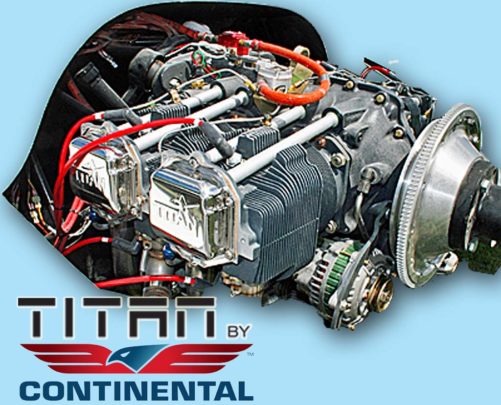
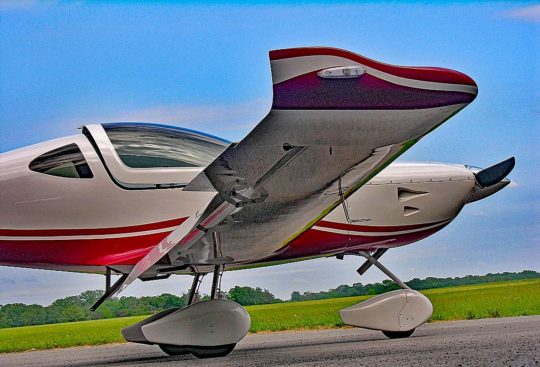 Yet the allure of going fast is great, quickly chewing up the miles en route to your destination. When contemplating a cross country trip of a lengthy distance, fast cannot be too fast. In addition to a higher TAS, we all yearn for a tailwind that will raise our ground speed by another 20 mph.
Lightning with the big Titan engine required a bulging nose cowl, Nick said. Taller landing gear for bigger props, bigger brakes, and 40 gallon fuel tanks are also among some of the features of this kit.
How fast does Lightning XS go? Early testing revealed max cruise at 165 knots (190 mph) TAS at 8,500 feet density altitude at full gross. Climb is a stunning 2,000 fpm. These figures may sound boastful but but reflect real-time experience as recorded by the no-nonsense Nick Otterback.
Yet the allure of going fast is great, quickly chewing up the miles en route to your destination. When contemplating a cross country trip of a lengthy distance, fast cannot be too fast. In addition to a higher TAS, we all yearn for a tailwind that will raise our ground speed by another 20 mph.
Lightning with the big Titan engine required a bulging nose cowl, Nick said. Taller landing gear for bigger props, bigger brakes, and 40 gallon fuel tanks are also among some of the features of this kit.
How fast does Lightning XS go? Early testing revealed max cruise at 165 knots (190 mph) TAS at 8,500 feet density altitude at full gross. Climb is a stunning 2,000 fpm. These figures may sound boastful but but reflect real-time experience as recorded by the no-nonsense Nick Otterback.
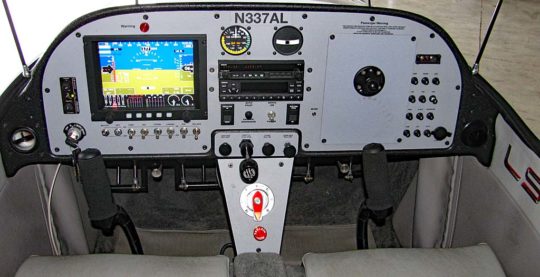 Most buyers may elect more than the basics but the fully-built Light-Sport Aircraft version of Lightning, called LS-1, is base priced at the genuine bargain of $115,000. Yet if you have time, the interest, and enjoy constructing a kit, Lightning XS has a base kit price of $39,900 with the
Most buyers may elect more than the basics but the fully-built Light-Sport Aircraft version of Lightning, called LS-1, is base priced at the genuine bargain of $115,000. Yet if you have time, the interest, and enjoy constructing a kit, Lightning XS has a base kit price of $39,900 with the 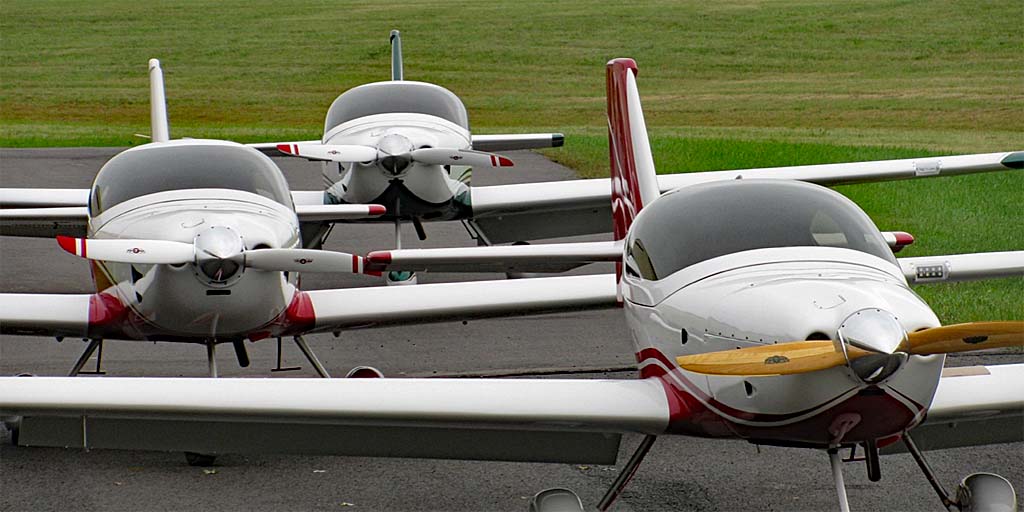
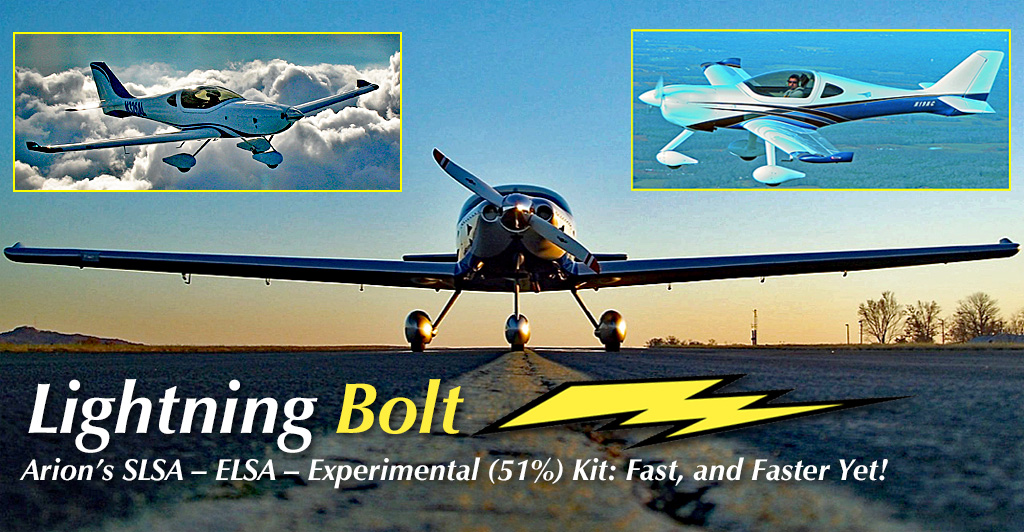
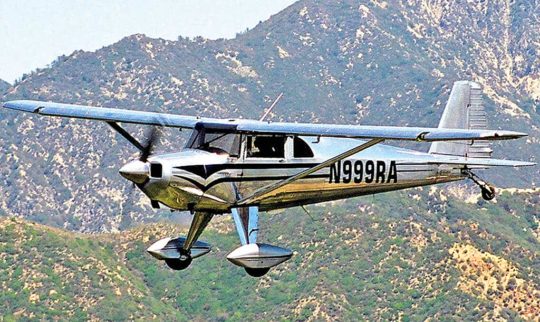
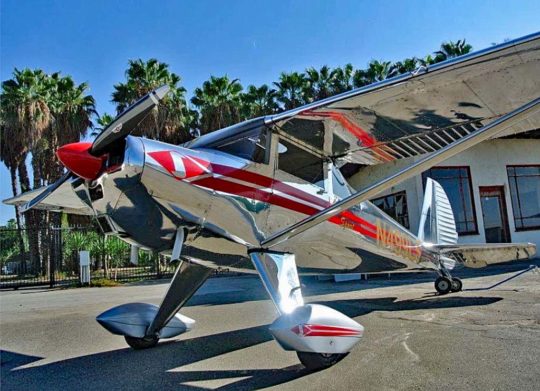 Now, Luscombe Aircraft Corporation (LAC) has gone cross country again, this time to Jamestown, New York in the western part of the Empire State. Here's
Now, Luscombe Aircraft Corporation (LAC) has gone cross country again, this time to Jamestown, New York in the western part of the Empire State. Here's 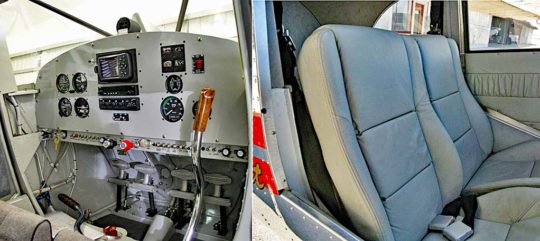 "Then, we will start assembling complete airplanes using LSA regulations," confirmed Steve. "Built as a Light Sport Aircraft to ASTM industry consensus standards," Steve said, "the Model-8 is … an all-metal airplane originally designed and still constructed to USA CAR 4a standard airworthiness requirements." CAR standards preceded today's Part 23 rules.
In New York state, Steve noted that he and his partner want to retain the vintage look of Luscombe 8F Silveraire. That doesn't mean it's old fashioned, though. Hidden behind the classic panel and glove box doors that were popular from 1942 to 1959 lies state of the art power management panel and instruments." (See panel images at bottom.)
"Then, we will start assembling complete airplanes using LSA regulations," confirmed Steve. "Built as a Light Sport Aircraft to ASTM industry consensus standards," Steve said, "the Model-8 is … an all-metal airplane originally designed and still constructed to USA CAR 4a standard airworthiness requirements." CAR standards preceded today's Part 23 rules.
In New York state, Steve noted that he and his partner want to retain the vintage look of Luscombe 8F Silveraire. That doesn't mean it's old fashioned, though. Hidden behind the classic panel and glove box doors that were popular from 1942 to 1959 lies state of the art power management panel and instruments." (See panel images at bottom.)
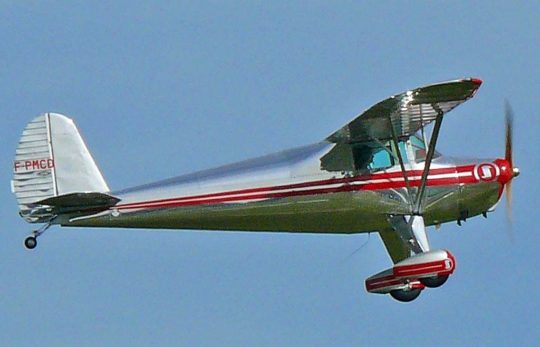
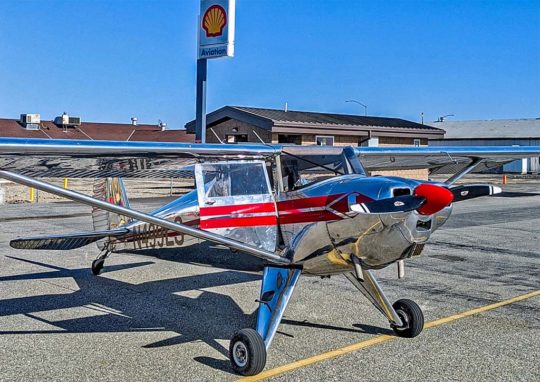 "We have also worked extensively with the professional aviation archivists at AirCorps Aviation in Bemidji, Minnesota to develop a digital archive of Luscombe’s large collection of historical records, engineering drawings, and production work orders. We have inspected and are refurbishing production jigs and tooling to resume production of those hard-to-find parts.
LAC is developing close working relationships with the local metal working specialty shops "to leverage the rich Western New York and North Pennsylvania manufacturing base. Using the original Luscombe jigs, restorations [can be] expertly crafted in our 25,000-square-foot hangar at the Jamestown Airport (KJHW).
"We have also worked extensively with the professional aviation archivists at AirCorps Aviation in Bemidji, Minnesota to develop a digital archive of Luscombe’s large collection of historical records, engineering drawings, and production work orders. We have inspected and are refurbishing production jigs and tooling to resume production of those hard-to-find parts.
LAC is developing close working relationships with the local metal working specialty shops "to leverage the rich Western New York and North Pennsylvania manufacturing base. Using the original Luscombe jigs, restorations [can be] expertly crafted in our 25,000-square-foot hangar at the Jamestown Airport (KJHW).
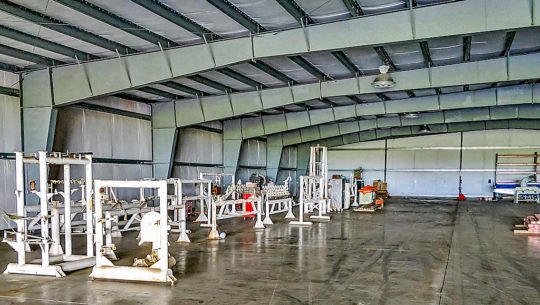
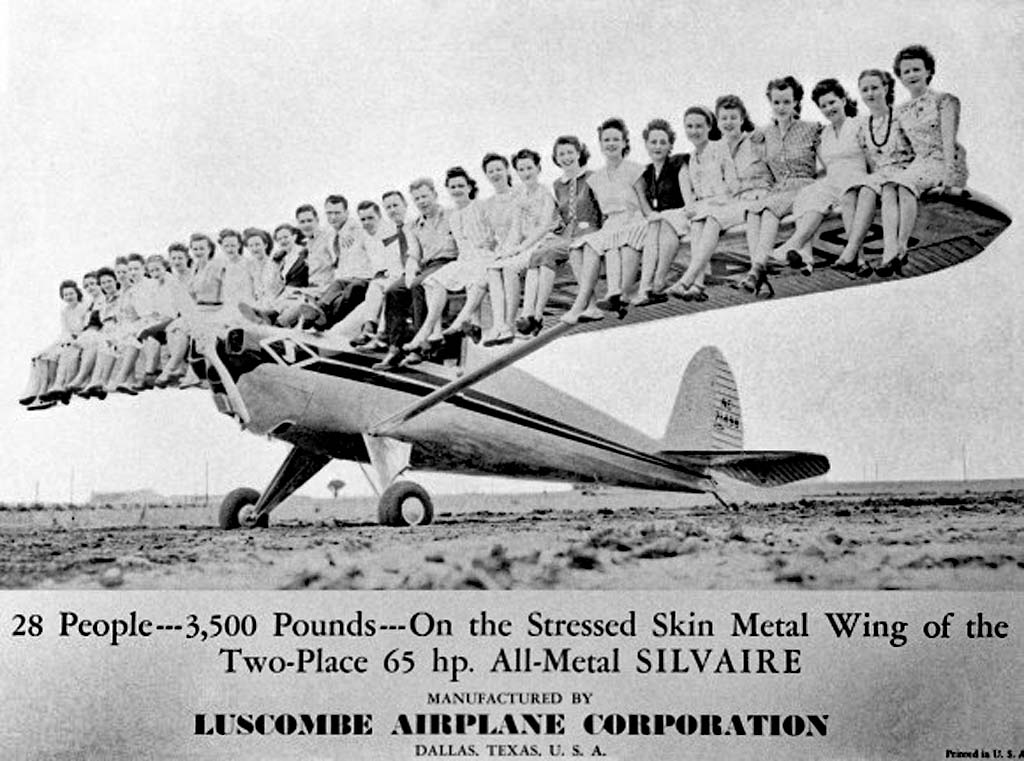
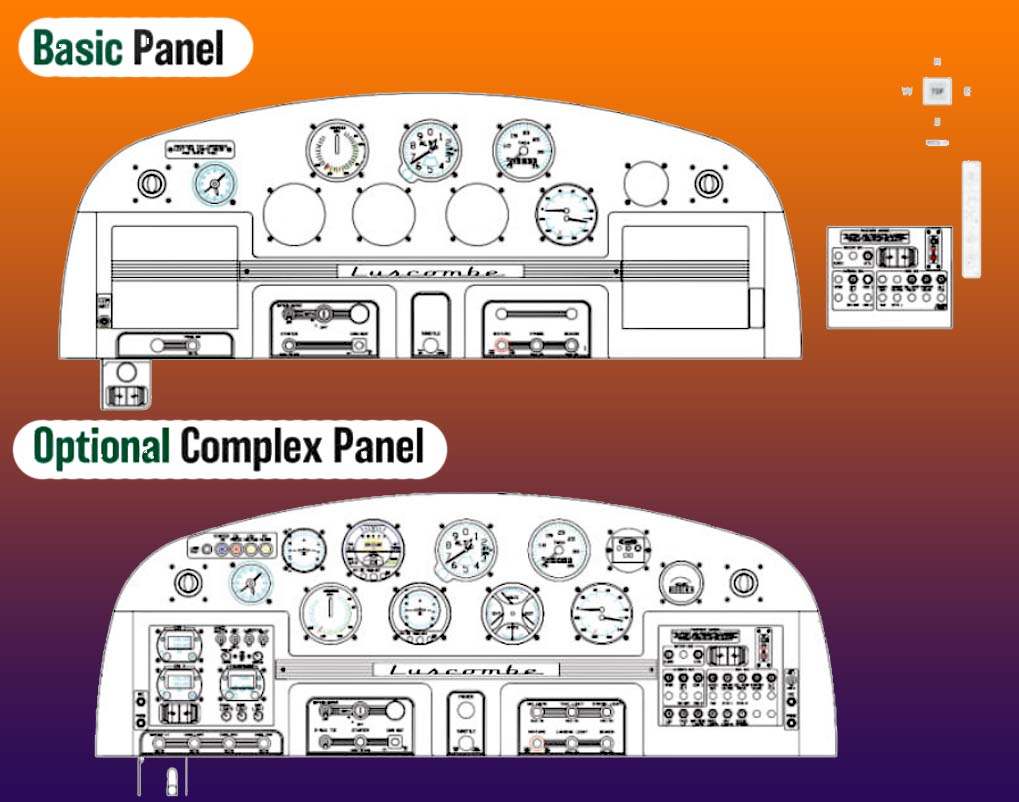
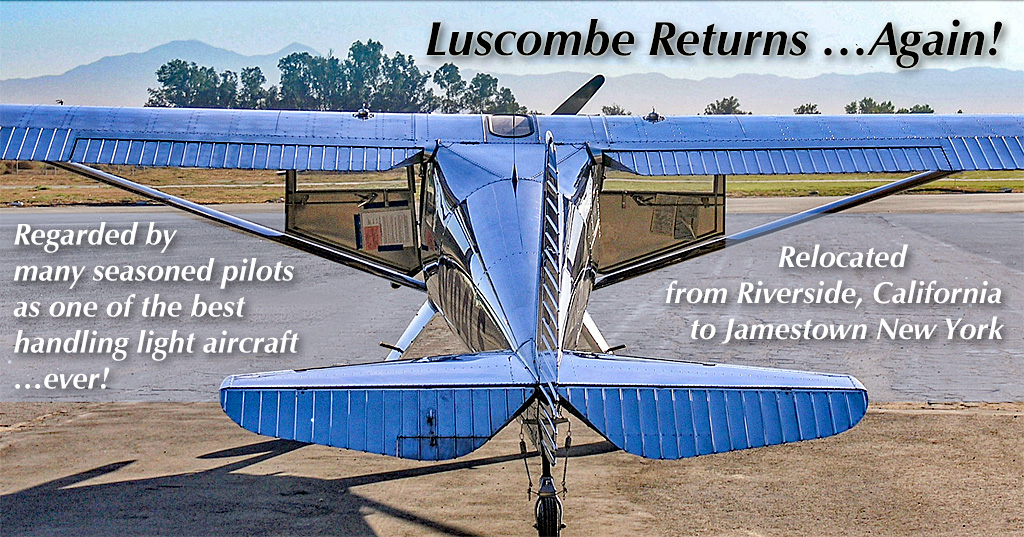
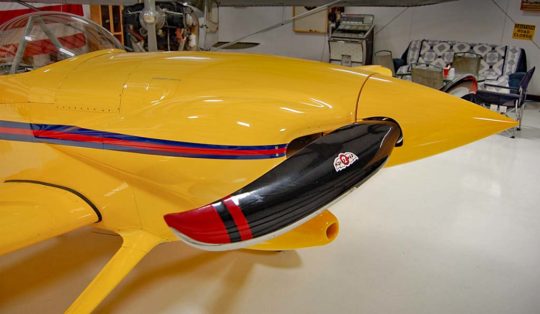 However, times advance inexorably. Wood lead to metal which gave way to composite, a category now including carbon fiber. Through it all, Plant City, Florida-based Sensenich has managed to keep their products "right on the nose" (except for pusher configurations, of course).
The company quartered only a few miles from Sun 'n Fun introduced metal propellers in the 1940s, developed composite propellers in the late 1990s, and continues to push boundaries in the light aircraft, unmanned, and marine propulsion markets. For those unaware, Sensenich has built a substantial business making large diameter, very-wide-chord props for airboats.
However, times advance inexorably. Wood lead to metal which gave way to composite, a category now including carbon fiber. Through it all, Plant City, Florida-based Sensenich has managed to keep their products "right on the nose" (except for pusher configurations, of course).
The company quartered only a few miles from Sun 'n Fun introduced metal propellers in the 1940s, developed composite propellers in the late 1990s, and continues to push boundaries in the light aircraft, unmanned, and marine propulsion markets. For those unaware, Sensenich has built a substantial business making large diameter, very-wide-chord props for airboats.
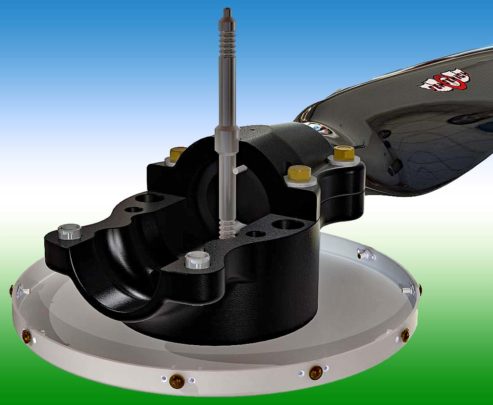
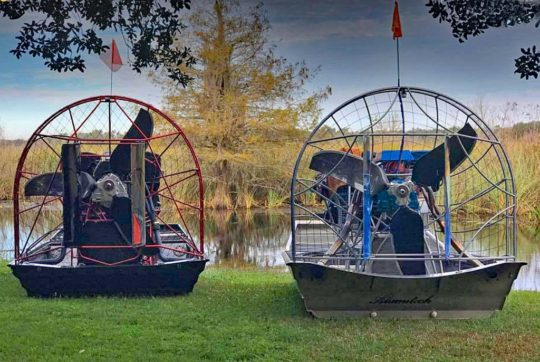
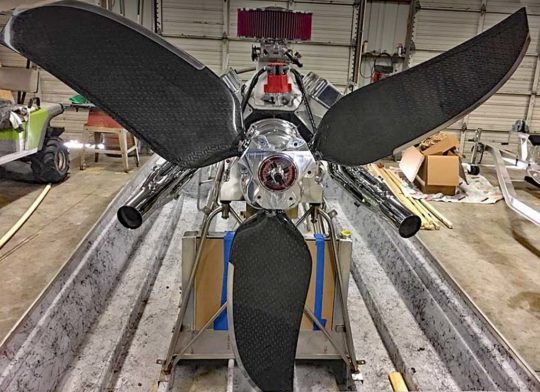 Performance is not only measured in speed or rate of climb. Weight also matters.
Sensenich's new composite propeller is listed at half the weight of the legacy STOL propeller: 21 pounds for the new Sensenich prop versus 44 pounds for a metal unit.
The propeller is available in diameters from 78 inches to 82 inches. The STC also covers a 12-inch diameter balanced composite spinner.
This STC will be available for new-build propellers starting the first quarter of 2021. Pricing for the propeller with STC documentation is $6,350 FOB Plant City. Adding the spinner brings the price to $7,085 including STC documents.
While
Performance is not only measured in speed or rate of climb. Weight also matters.
Sensenich's new composite propeller is listed at half the weight of the legacy STOL propeller: 21 pounds for the new Sensenich prop versus 44 pounds for a metal unit.
The propeller is available in diameters from 78 inches to 82 inches. The STC also covers a 12-inch diameter balanced composite spinner.
This STC will be available for new-build propellers starting the first quarter of 2021. Pricing for the propeller with STC documentation is $6,350 FOB Plant City. Adding the spinner brings the price to $7,085 including STC documents.
While 
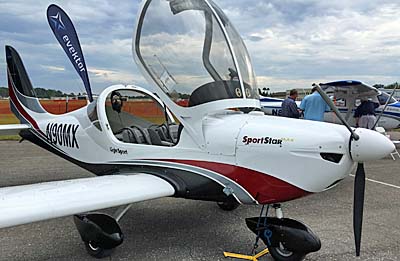
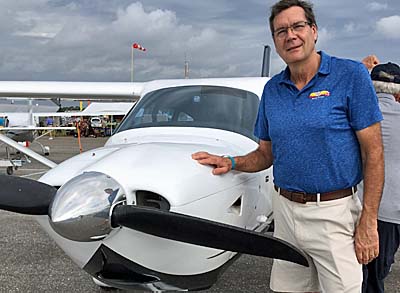
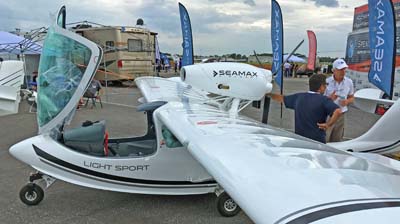 Seamax
Seamax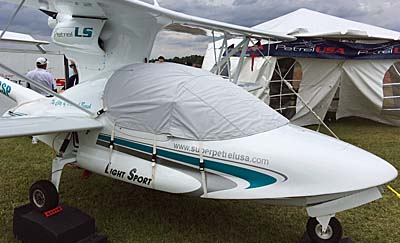 Inside the tent, we did an interview with
Inside the tent, we did an interview with 